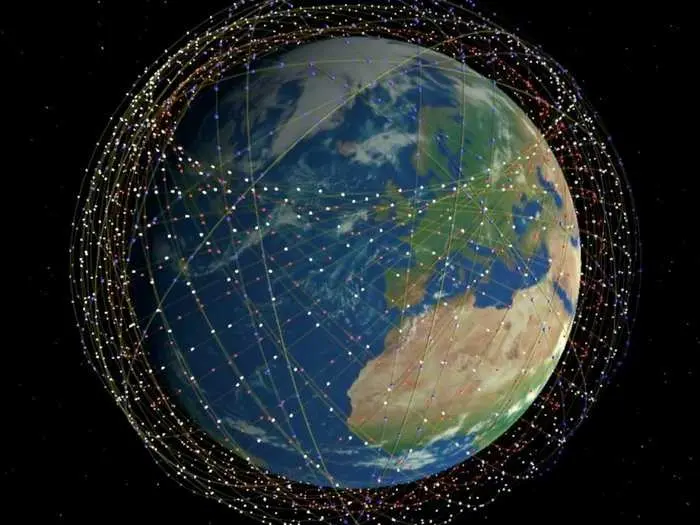Lighting design has undergone significant transformations in recent years, driven primarily by advancements in technology, growing environmental awareness, and stringent energy efficiency standards. As one of the most critical aspects of building design impacting energy consumption and occupant comfort, innovative approaches in lighting design have emerged to maximize energy efficiency while enhancing visual quality and sustainability. This article explores the latest trends, technologies, case studies, and their implications in the realm of lighting design for energy efficiency.
Importance of Energy-Efficient Lighting Design
Effective lighting design plays a pivotal role in reducing energy consumption, operational costs, and environmental impact in buildings. According to the U.S. Department of Energy (DOE), lighting accounts for about 20% of the total energy use in commercial buildings and approximately 10% in residential buildings. By adopting energy-efficient lighting solutions, building owners and designers can achieve substantial energy savings while creating comfortable, visually appealing environments for occupants.
Trends and Technologies in Energy-Efficient Lighting Design
1. LED Lighting Systems
Light Emitting Diode (LED) technology has revolutionized lighting design with its superior energy efficiency, longevity, and versatility:
- Energy Efficiency: LEDs consume significantly less energy than traditional incandescent and fluorescent lamps, resulting in immediate energy savings and reduced electricity bills.
- Long Lifespan: LED fixtures have a much longer lifespan, typically lasting 25,000 to 50,000 hours or more, reducing maintenance costs and the frequency of lamp replacements.
- Design Flexibility: LEDs are available in various shapes, sizes, and color temperatures, offering designers flexibility to create customized lighting solutions tailored to specific applications and user preferences.
2. Lighting Controls and Automation
Advancements in lighting control systems enable precise management of light levels, occupancy sensing, daylight harvesting, and scheduling:
- Occupancy Sensors: Motion sensors detect occupancy in spaces and automatically adjust lighting levels or turn off lights when areas are unoccupied, reducing energy waste.
- Daylight Harvesting: Photosensors measure natural light levels and adjust artificial lighting accordingly to maintain consistent illumination levels, minimizing energy use during daylight hours.
- Integrated Systems: Building Management Systems (BMS) integrate lighting controls with HVAC and other building systems for centralized monitoring, optimization, and energy management.
3. Smart Lighting Solutions
Emerging smart lighting technologies leverage Internet of Things (IoT) connectivity and data analytics to enhance energy efficiency and user experience:
- Wireless Connectivity: Bluetooth Low Energy (BLE), Zigbee, and Wi-Fi-enabled luminaires allow remote monitoring, control, and maintenance of lighting systems via smartphones or web-based platforms.
- Data-Driven Insights: Advanced analytics provide real-time data on energy consumption, occupancy patterns, and lighting usage trends, enabling informed decisions for optimizing energy efficiency and operational performance.
- Personalized Lighting Experiences: Tunable white and color-changing LEDs adjust light color and intensity to mimic natural daylight rhythms or create dynamic lighting scenes tailored to user preferences and circadian rhythms.
4. Circadian Lighting Design
Circadian lighting design principles focus on supporting human health and well-being by aligning artificial lighting with natural circadian rhythms:
- Human-Centric Lighting: Tunable LED systems adjust color temperature throughout the day to promote alertness, productivity during the day and relaxation, and sleep at night.
- Biological Impacts: Properly designed circadian lighting can improve sleep quality, mood, and overall well-being for building occupants, particularly in healthcare, educational, and office environments.
5. Sustainable Materials and Design Practices
In addition to technological innovations, sustainable design practices in lighting focus on reducing environmental impact through:
- Recyclable Materials: Use of recyclable materials in luminaire construction and packaging to minimize waste and promote circular economy principles.
- Energy-efficient Design Standards: Compliance with energy codes and standards, such as ENERGY STAR, LEED, and ASHRAE 90.1, ensures high performance and environmental sustainability in lighting design.
Case Studies Demonstrating Energy-Efficient Lighting Success
Case Study 1: Office Building Retrofit
- Location: Chicago, IL
- Key Features:
- Replacement of fluorescent tubes with LED fixtures reduced lighting energy consumption by 50%.
- Installation of occupancy sensors and daylight harvesting controls further optimized energy savings, achieving payback on investment within three years.
- Integration of smart lighting controls with BMS enabled remote monitoring and adjustment of lighting schedules based on occupancy patterns and daylight availability.
Case Study 2: Retail Store Chain
- Location: Nationwide, USA
- Key Features:
- Deployment of IoT-enabled LED lighting systems across multiple stores reduced energy use by 30% compared to previous lighting technologies.
- Implementation of programmable lighting scenes and color-changing LEDs enhanced visual merchandising and customer experience, increasing sales and brand engagement.
- Use of smart lighting analytics improved maintenance efficiency, identified operational inefficiencies, and supported data-driven decision-making for future store designs.
Challenges and Considerations in Implementing Energy-Efficient Lighting
Challenges
- Initial Cost: Higher upfront costs of LED fixtures and advanced lighting control systems may require careful financial planning and consideration of long-term energy savings and operational benefits.
- Technical Complexity: Integration of diverse lighting technologies, controls, and IoT platforms necessitates expertise in design, installation, and maintenance to ensure optimal performance and user satisfaction.
- User Acceptance: Adoption of new lighting technologies and controls requires user education, training, and adjustments to ensure comfort, usability, and satisfaction with lighting quality and functionality.
Future Trends in Energy-Efficient Lighting Design
- Integration with Smart Cities: Expansion of smart lighting networks in urban environments to support smart city initiatives, improve public safety, and enhance energy efficiency across municipal infrastructure.
- Health and Wellness Applications: Continued research and development of circadian lighting technologies to optimize occupant health, productivity, and well-being in diverse building types and environments.
- Advancements in IoT Connectivity: Further development of interoperable IoT platforms and standards to facilitate seamless integration, scalability, and cybersecurity of connected lighting systems.
Conclusion
In conclusion, innovations in lighting design for energy efficiency are reshaping the way buildings are illuminated, enhancing sustainability, occupant comfort, and operational efficiency. From the widespread adoption of LED technology and advanced lighting controls to the emergence of smart lighting solutions and circadian lighting principles, MEP engineers and lighting designers have a wealth of tools and strategies to create energy-efficient, visually appealing environments. As technology continues to evolve and sustainability goals become more ambitious, the role of energy-efficient lighting design will remain pivotal in achieving global energy conservation targets, reducing carbon emissions, and creating healthier, more resilient built environments for future generations. By embracing these innovations and best practices, stakeholders in the building industry can contribute to a more sustainable and luminous future.



